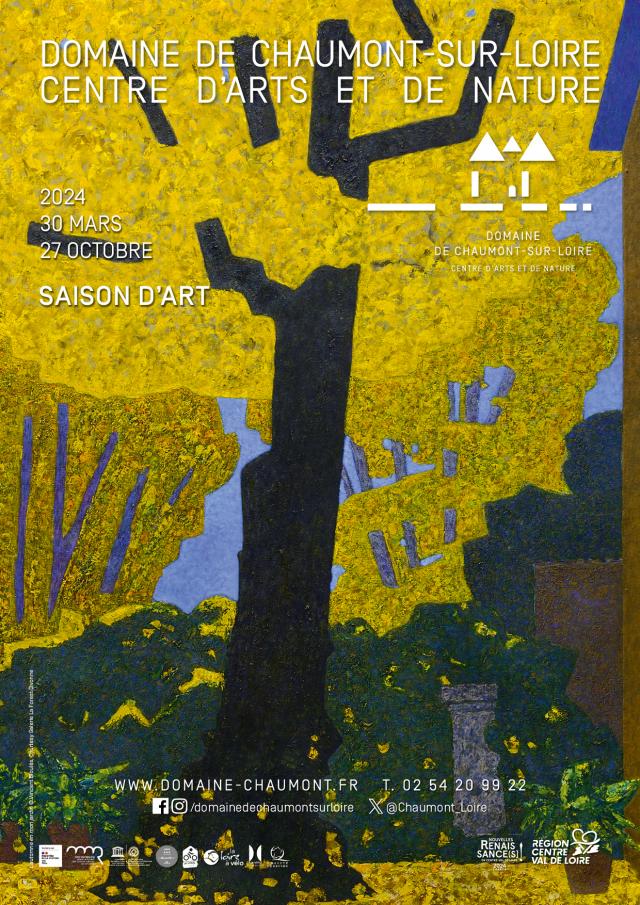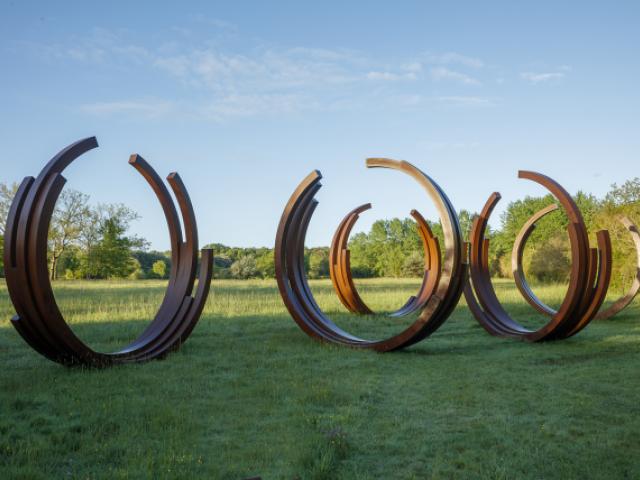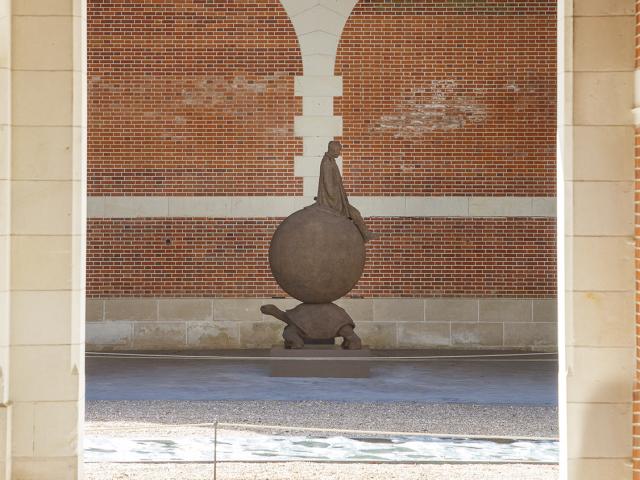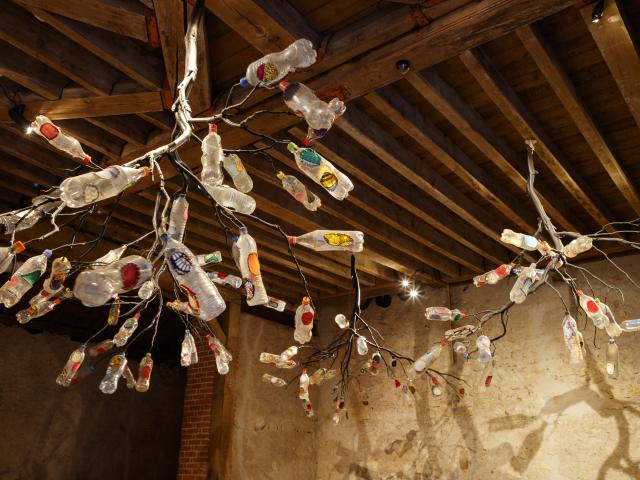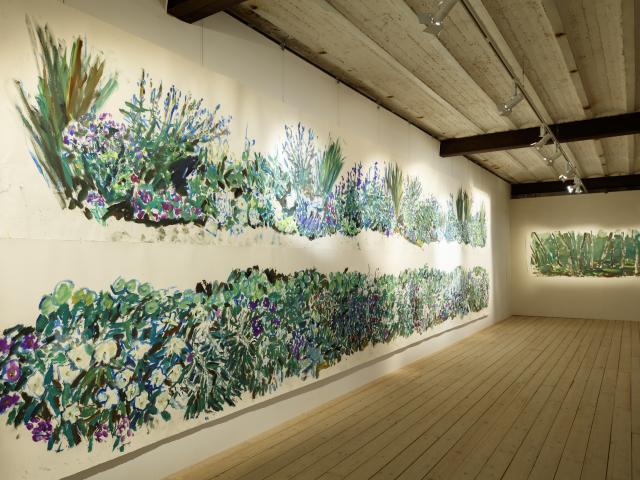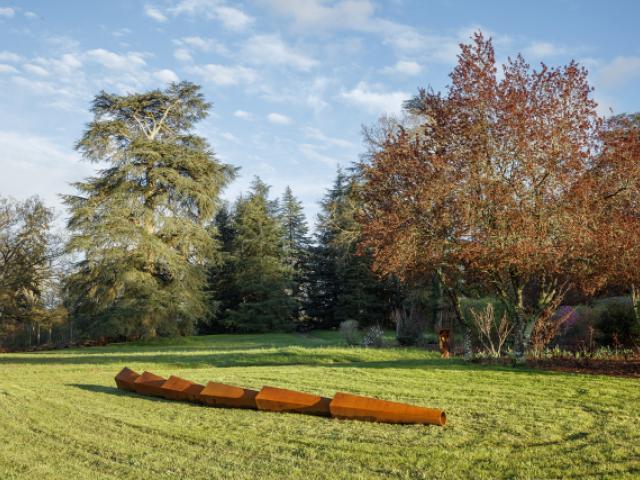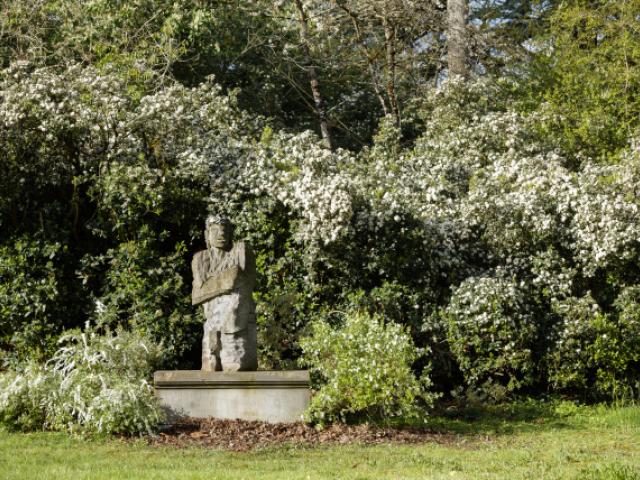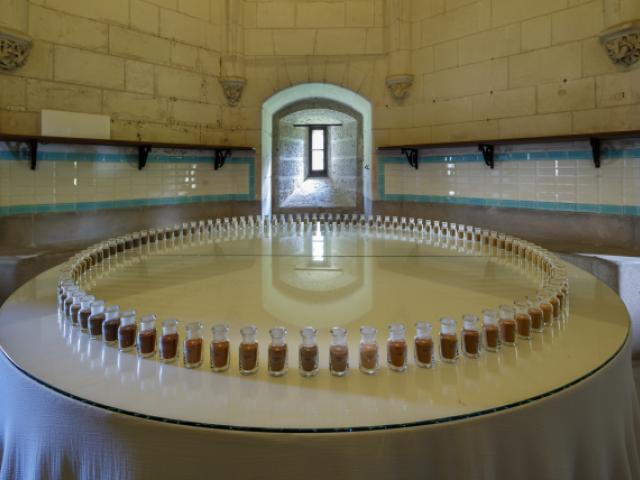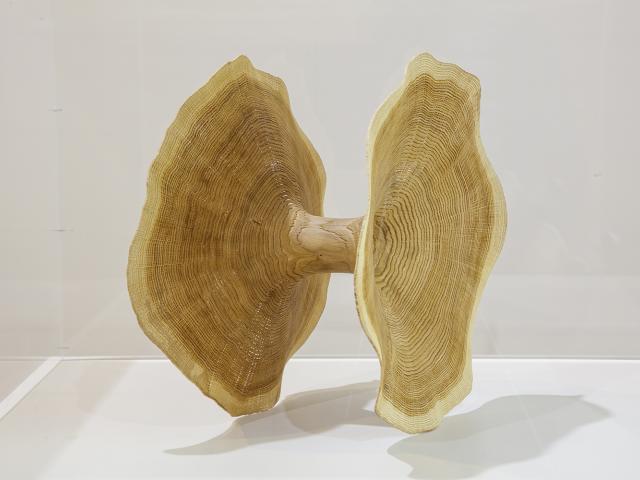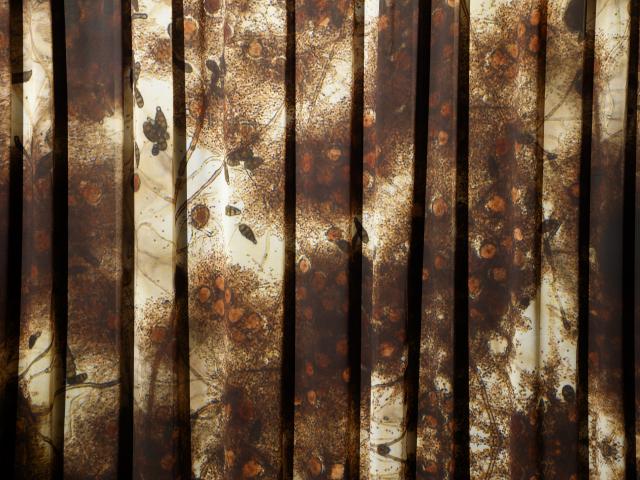30 MAR. - 27 OCT. 2024
2024 Art season
This year, the Domain of Chaumont-sur-Loire is mimicking the style of the Gardens of Bomarzo with some monstrous and atypical sculptures and fantastic creatures straight from the world of fairy tales, myths and legends in the dense groves of the Historic Grounds!
First of all, is La Grotte Chaumont by Miquel Barceló, a monumental ceramic artwork that he created in his ceramics studio in Mallorca. It weighs an impressive 8 tonnes, a first for the artist. This performer of miracles has long been fascinated by the plasticity of clay and its telluric current. This cave is designed in the style of the famous façade of Mallorca Cathedral, but is intended to stand the harsh tests of time. It resembles the giant mouth of a monstrous creature ready to seize the viewer and is a real first, both in terms of the beauty of the masterpiece and its unmatched technical complexity.
Nearby and just as enigmatic, the viewer’s gaze is drawn to Prune Nourry’s giant figures made from woven rope, with their huge anthropomorphic silhouettes transforming into trees before our eyes, while Denis Monfleur’s two impressive pieces, L’Oiseleur and L’Homme sauvage have taken up residence in the large green thickets in the grounds. But there are still many more surprises in store. Is that a cedar treewith gilded attire over there? Dressed in such finery, Olga Kisseleva’s tree is able to reveal its mysterious language.
Then Gloria Friedmann’s Le Locataire emerges. This impressive ceramic sculpture stands under the Stables Canopy and calls into question our relationship with nature and our role on Earth. Can we achieve the right balance required for our survival?
A new and just as spectacular feature in the visitor’s tour is the appearance of Bernar Venet’s large-scale corten steel sculptures. These arches interact with the big trees in the grounds, and their circular shapes add to the magic of the domain. Another artist, another metal. Vincent Barré has created oblong structures that are laid out horizontally as kinds of anonymous, impenetrable signs in these historic, artistic grounds of the fleeting nature of things and of the time we have in this world. Here, everything is open to interpretation, much like in the Gardens of Bomarzo.
But let us now leave the Historic Grounds and head towards other extravagant discoveries, other visions of nature. It is time to enter a world filled with gardens, flowers, leaves, soil and even pollen. In the Château’s Upper Galleries we come across the subtly joyful atmosphere created by painter Vincent Bioulès with around forty paintings on the theme of nature and landscape, revealing an exceptional scientific perspective of colour and light. Just a few rooms away from there awaits the fabulous piece entitled Laissez entrer le soleil by Pascal Oudet, who transforms oak into lace, telling us an intimate story at the same time.
In complete contrast to this flurry of shapes, Kôichi Kurita’s minimalistic installation is on display in Diane's Tower. The fascinating vials filled with soil are lined up in rows, granting us access to a part of the artist’s precious Soil Library, the tangible utopia the artist has been gathering for 20 years.
Back from the Château, the hanging chandeliers by Pascale Marthine Tayou await visitors in the Bee Barn. They show the magnificence of nature combined with humanity’s material waste.
In the Agnès Varda Courtyard Galleries, Damien Cabanes’ wonderful gardens are exhibited. The result of a residency at the Domain of Chaumont-sur-Loire, these paintings on paper have the freshness of a seized moment and the depth of an artistic approach infused in art history.
The Farmyard will be welcoming Mundo Perdido, three bronze architectural models with gold leaf gilding from Anne and Patrick Poirier, and the artistic duo are also exhibiting paintings and photographs on porcelain in the Donkey Stables, featuring meaningful messages, such as “La nature, pour être commandée, doit être obéie” (To be commanded, nature must first be obeyed). On the first floor, Karine Bonneval’s imaginary meadow portrays the beauty of pollen, whose mission is to pass on life. By changing perspective, art really has the power to change the world.
Chantal Colleu-Dumond
Exhibition curator
